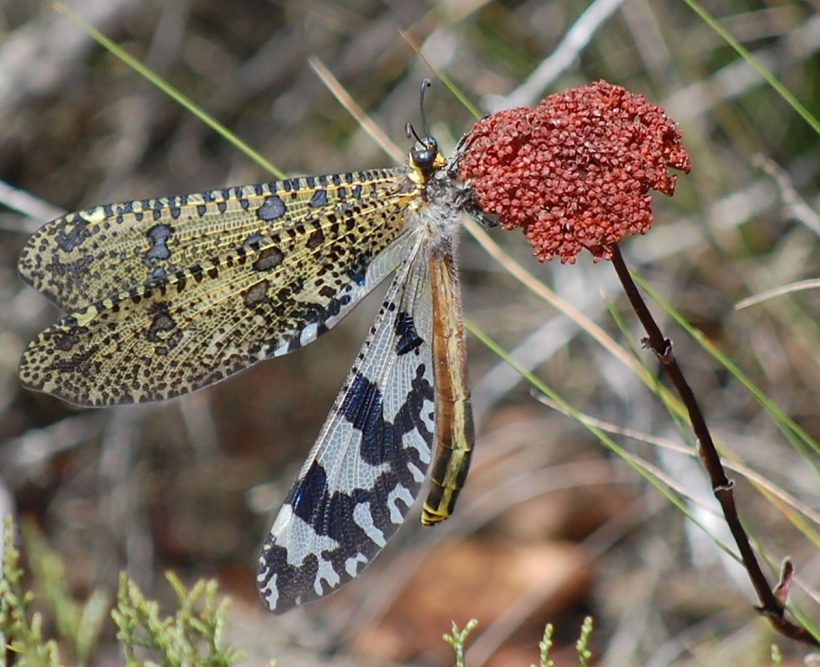With the launch of our brand new Overberg Renosterveld Conservation Trust (ORCT) Field Guide app just around the corner, we’ll be able to share information about our incredible renosterveld species with a broader audience.
The smartphone app will allow you to access our complete field guide, and a host of new Overberg Renosterveld species not included in the book, in the palm of your hand. This means exploring renosterveld and getting to know its fauna and flora first-hand will be easier than ever, since you can consult the guide immediately while out in the veld.
Working on this app offered our team the chance to fall in love with renosterveld all over again. We’ve enjoyed rediscovering why the species that call this vegetation type home are so special.
In the build-up to the launch, we’re sharing more about some of the interesting winged insects of renosterveld, that you’ll soon be able to get to know even better on the app.
Here are five peculiar species that you might encounter when you next go bug hunting in the veld:
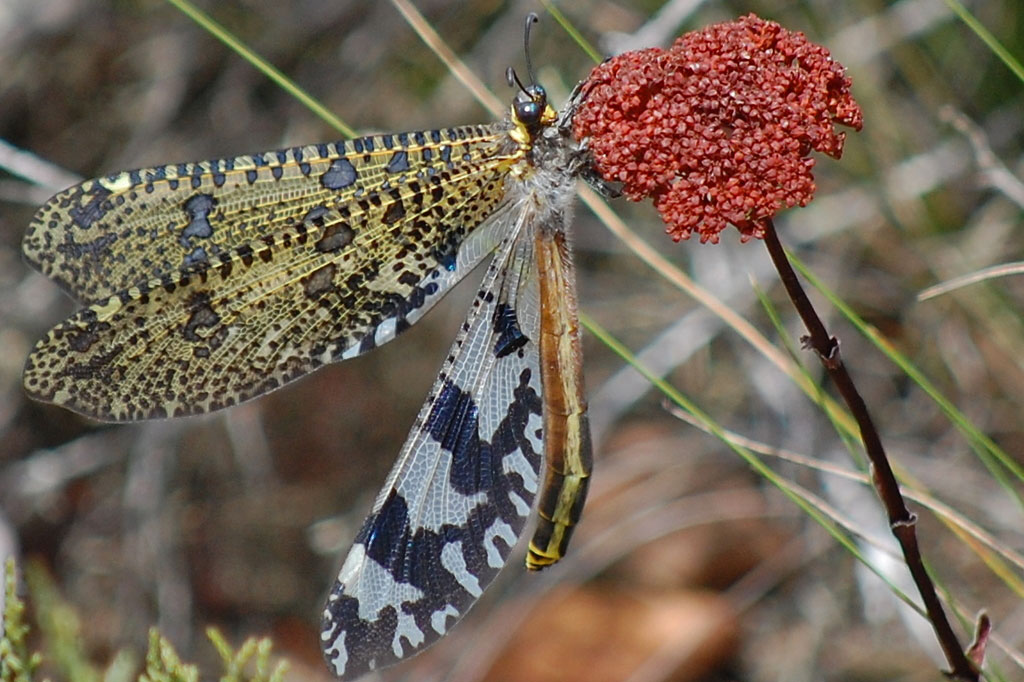
Above: Spotted Veld Antlion (Palpares speciosus) by Charles Stirton, iNaturlist
-
Antlions (Other name: Mierleeus)
Order: Neuroptera
The larvae of these beautiful insects produce pitfall traps in loose soil to trap their small insect prey. The adults are sometimes confused with dragonflies. They fly in the late afternoon and at night and are attracted to lights, a habit uncommon in dragonflies. The wings of the larger species are sometimes decorated with black and yellow markings.
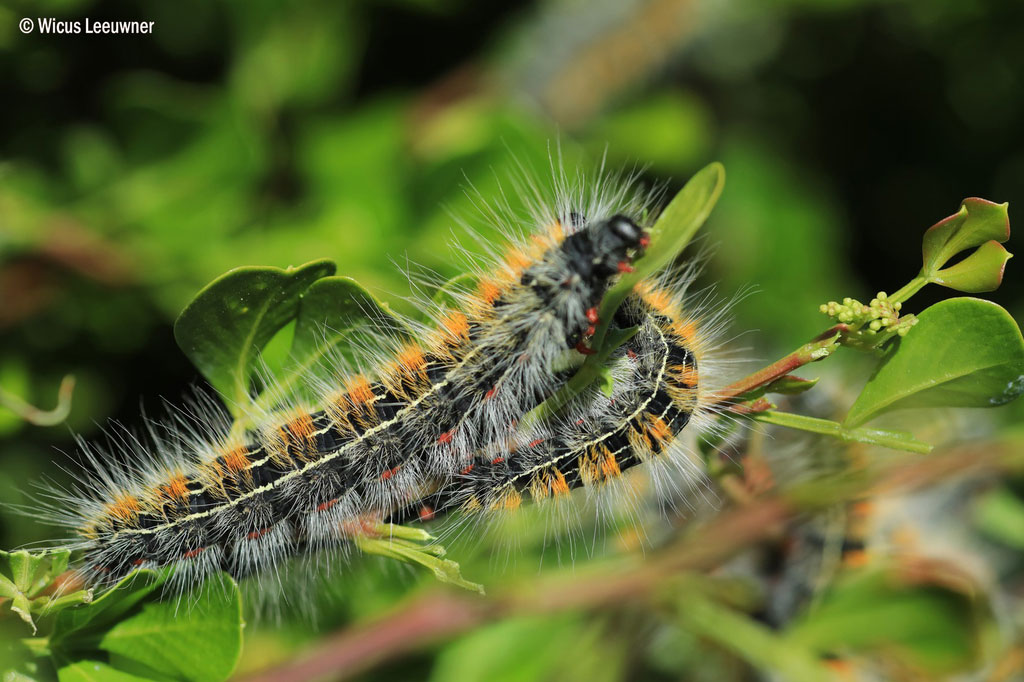
Above: Barred eggarlet (Bombycomorpha bifascia) by Wicus Leeuwner, iNaturalist
-
Barred Eggarlet (Other name: Gestreepte Peperboomrusper)
Bombycomorpha bifascia
Family: Lasiocampidae (Eggar Moths, Lappet Moths)
The Barred Eggarlet feeds on the leaves of Bleekkoeniebos (Searsia pallens). The larvae are covered in white, orange and black hairs protecting them against predators. These larvae may defoliate an entire shrub. Mature caterpillars move to the ground where they ingest soil which they mix with silk to build hard, brown cocoons. Like most members of Lasiocampidae, they do not feed as adults, and their sole purpose is to find a mate and reproduce, living on the nutrients they obtained during the larval stage. Adults are light grey with darker bands on their wings. Their lifespan is about one week.
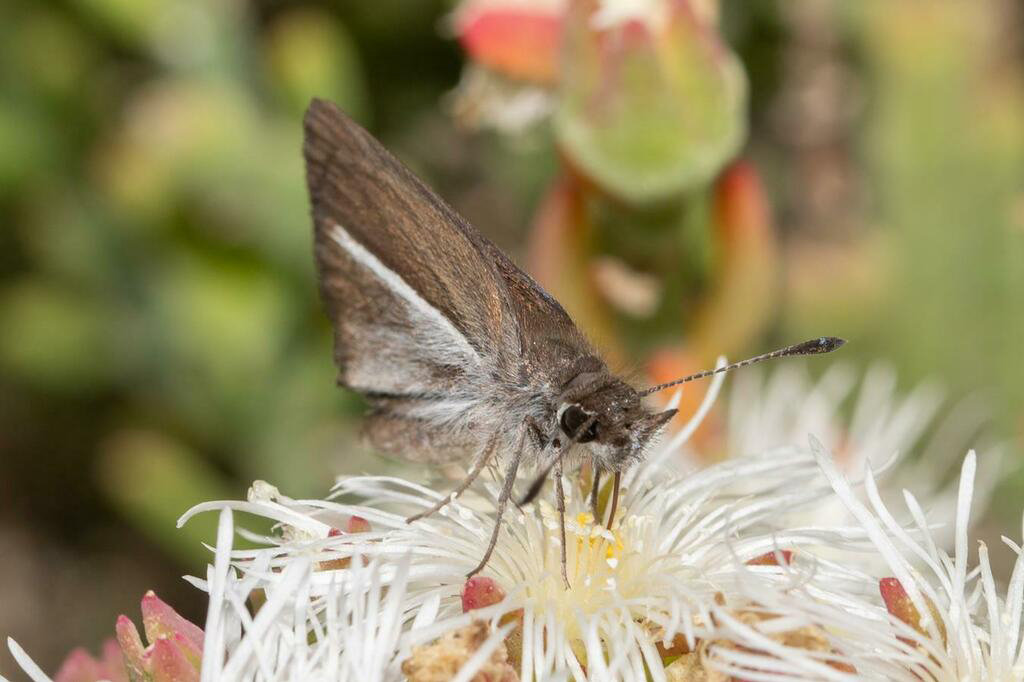
Above: Eastern Tulbagh Sylph (Tsitana tulbagha ssp. kaplani) by Odette Curtis-Scott, iNaturalist
-
Sylph Butterfly (Other name: Tulbaghswaelstertjie)
Tsitana tulbagha
This small, black-brown skipper butterfly was found to be the pollinator of the rare and recently described Hesperantha kiaratayloriae, a Critically Endangered iris currently known from only two localities, which could be the only remaining locations for this species. The flight period of this butterfly (Sep-Dec, peaking in Oct-Nov) coincides with the flowering time of H. kiaratayloriae, which flowers relatively late (Nov) for a geophyte in this region. Caterpillars of the Tsitana genus feed on various grasses and in Overberg Renosterveld they are dependent on the perennial Wire Grass (Tenaxia stricta).
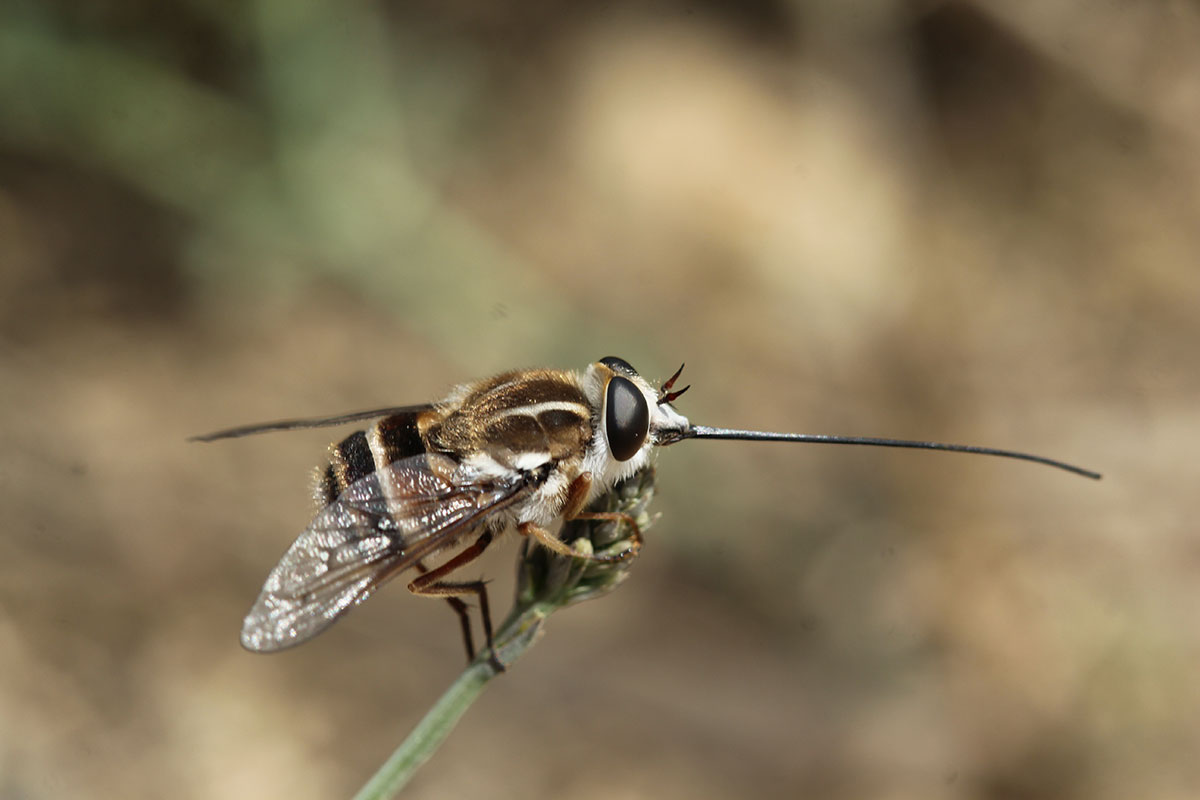
Above: Philoliche sp, by Odette Curtis-Scott
-
Needle-nose Fly
Philoliche sp.
Family: Tabanidae
A fly with a relatively large wingspan (34-44mm), a grey thorax with black markings and a black-and-white-banded abdomen. Unlike the proboscises found in moths and butterflies, this fly’s long proboscis is not rolled up, rather it is permanently protruding. An important pollinator for many species in renosterveld. Often encountered in a variety of renosterveld habitats. A similar, pollinating fly is Long-tongued Fly (Prosoeca longipennis), belonging to the Nemestrinidae family. It is responsible for pollinating several long-tubed flowers that require specialised pollinators for reproduction, such as Cyrtanthus leptosiphon (Amaryllidaceae) and species of Tritonia (Iridaceae) and Pelargonium (Geraniaceae). Unlike bird-pollinated flowers, which are red and unscented, these flowers are light in colour and sometimes produce a scent. It is feared that this fly may have become extinct in some areas and that the rare flowers it pollinated may follow its demise.
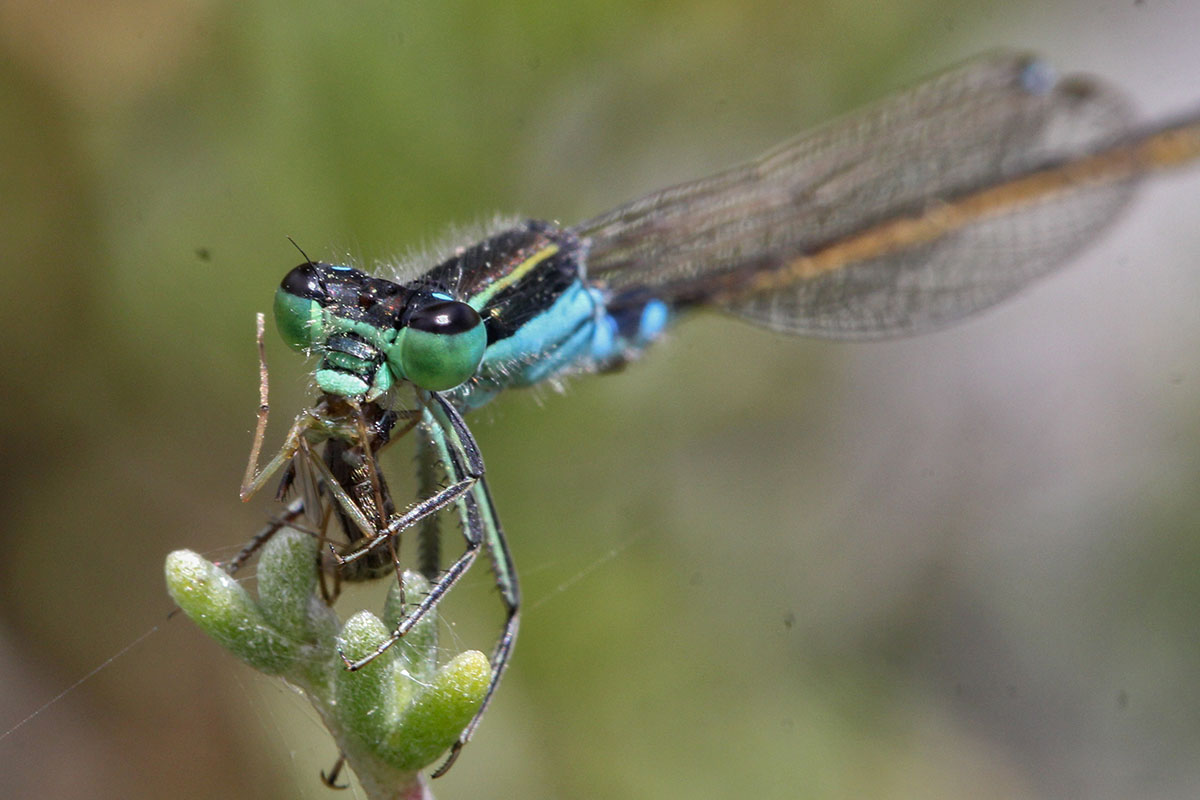
Above: Ischnura senegalensis, by Odette Curtis-Scott
-
March Bluetail (Ischnura senegalensis)
Family: Coenagrionidae (Pond Damsels)
This damselfly is a smallish species with a wingspan of 38mm. Damselflies differ from dragonflies in being skinnier and resting with their wings folded backwards. Males are a brighter blue and females have a pale green or orange thorax. This is the most widespread damselfly in the region and is found in almost any stagnant or slow-flowing body of water, including saline watercourses in renosterveld.
*From Field Guide to Renosterveld of the Overberg (2020)

